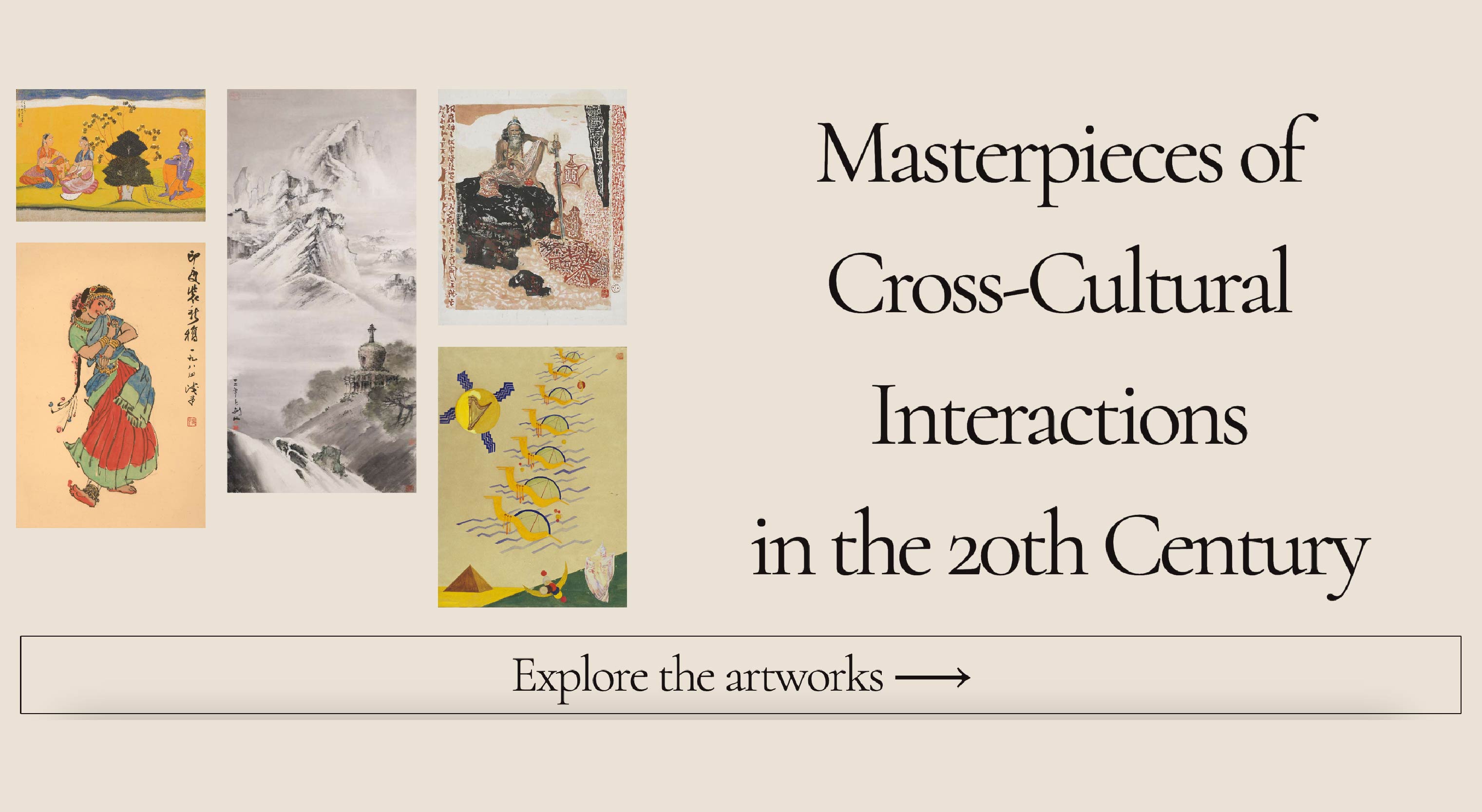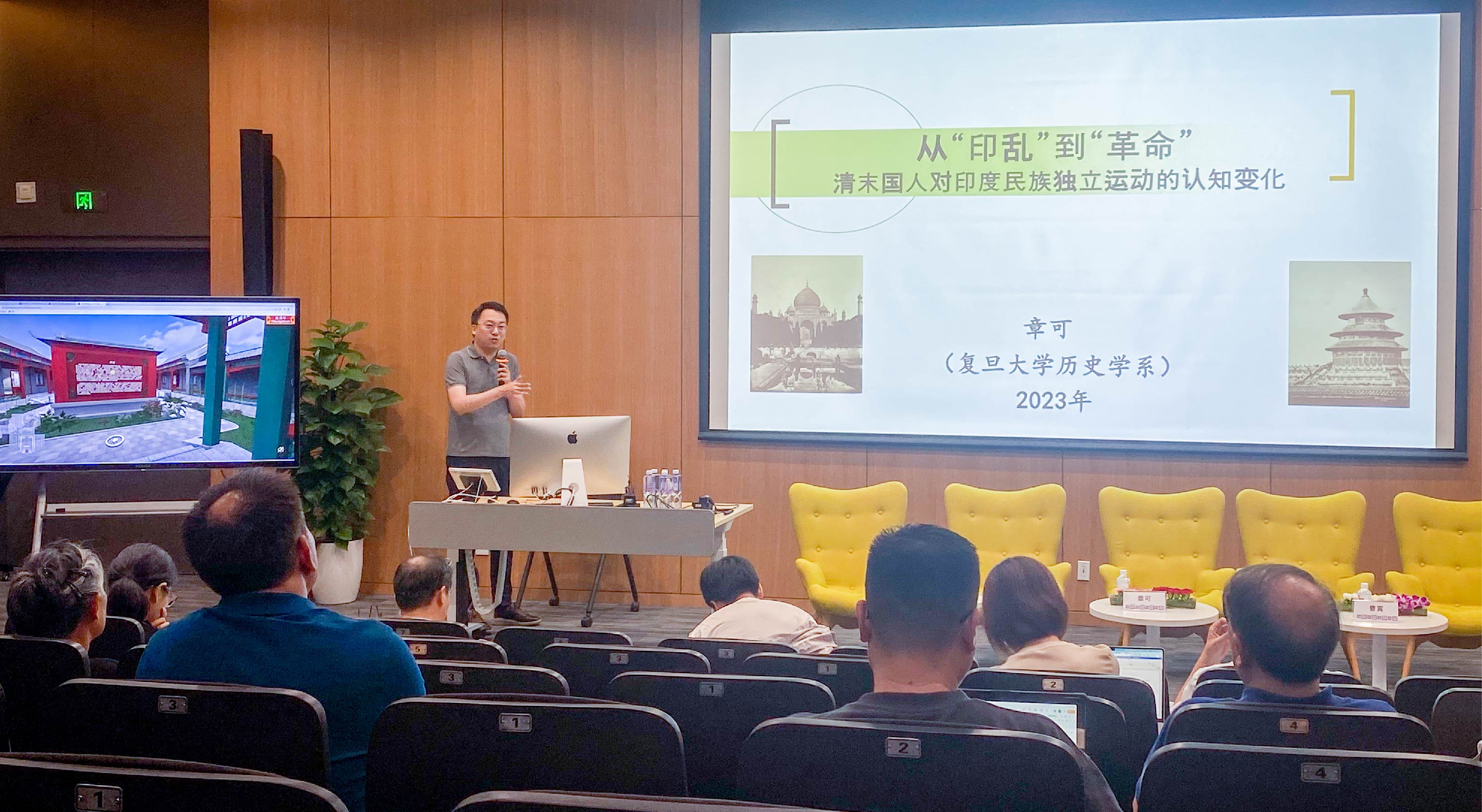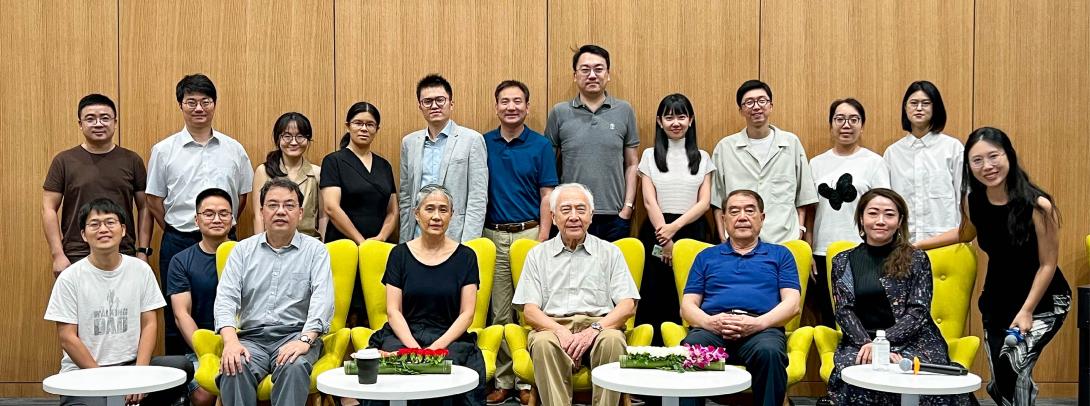NYU Shanghai’s Center for Global Asia (CGA) held a symposium from August 26 to 27 on the cultural interactions between China and India. Co-organized with the Asia Research Center of Fudan University and the Research Center for Eastern Literature of Peking University, the two-day conference brought together 21 scholars from top Chinese universities, descendants of overseas Chinese and artists who once lived and studied in india to share their latest research and family stories on Sino-Indian interactions in the fields of art, history, education, philosophy, science and technology from a global perspective.
“China and India have had a long history of cross-cultural interactions that was fostered through Buddhism at first,” said CGA Director Tansen Sen. “Even during the colonial period, artistic and intellectual exchanges continued to link the two civilizations. The symposium showcases these enduring ties. The aim is to move beyond contemporary geopolitical concerns and focus on instances when the peoples of China and India intermingled, exchanged ideas and views, and created new forms of art, literature, and knowledge.”
A VR virtual exhibition on the China-India artistic exchanges named “Flowers on One Stalk” was launched at the symposium’s opening ceremony. The exhibition showcased nearly 100 pieces of artwork by renowned Chinese artists such as Gao Jianfu, Xu Beihong, Zhang Daqian, Ye Qianyu, and Shi Lu. In addition, a large number of paintings by Chang Xiufeng, the first Chinese who went to India in the 1940s to study art, were also featured.The artworks of Xu Fancheng, the renowned Chinese philosopher and translator who lived in India for 33 years, were also displayed for the first time in China.
Powered by Unity 3D Models technology, four virtual exhibition halls displayed works on different themes, from sketches of ordinary Indian people by Chinese modern artists, to traditional Chinese landscape paintings. These artworks demonstrate the integration of Chinese and Indian elements.

VR virtual exhibition on the China-India artistic exchanges named “Flowers on One Stalk.”
During her presentation, Yan Yu from Shanghai Jiao Tong University focused on the representation of women in the hands of Chinese artists in the 20th century. From portraits of hardworking Indian women by artist Shi Lu, sketches of female Indian dancers by Zhang Daqian, to the visit of Dai Ailian, the pioneer of modern Chinese dance along with the then Premier Zhou Enlai to India, Yan explores the role played by women in the history of Sino-Indian artistic exchanges. The role of women has often been overlooked in major research. In the past, the main focus of research had been on the experiences of male Chinese modern artists who traveled toIndia, which created an impression that Sino-Indian artistic exchanges only involved men. Yan Yu’s presentation demonstrated how women were also important players in these exchanges and interactions.

(From left) Zhang Jiamei, associate professor of the School of Foreign Languages of Peking University, Yan Yu, lecturer of Shanghai Jiao Tong University, independent researcher Xu Zihao, and Columbia University doctoral candidate Liu Yuyuan answering questions from the audience
Professor Chen Ming, Dean of the School of Foreign Languages and Director of the Research Center for Eastern Literature of Peking University, shared stories of three young Indian artists who came to Beijing in the mid-20th century to study painting, from how they interacted with Chinese artists and were influenced by Chinese artistic tradition. He stressed that exchanges between China and India in modern times were two-way, and there were also less examined interactions and instances of history of "mutual assistance and mutual learning” that need to be examined.
Zhao Jinchao, assistant professor from the School of Humanities at Tongji University, looked at the history of the Chung Hwa School located in Kalimpong, India, once an important trading site between China and India. In 1941, local overseas Chinese merchants – including Ma Zhucai (Yunnan), Zhang Xiangcheng (Yunnan), and Liang Zizhi (Beijing) -- raised funds to establish the Kalimpong Chung Hwa School to promote Chinese culture and language courses. The School was an important educational center, open to both locals and the children of the overseas Chinese community. Professor Zhao reviewed the curriculum and daily activities held at the Kalimpong Chung Hwa School in comparison with Chinese schools in Kolkata during the same period, based on interviews with and historical photographs from descendants of overseas Chinese families who resided in Kalimpong.
At Sunday’s session, Professor Zhang Ke from Fudan University reviewed the shifting perceptions of the Indian independence movement among Chinese in the Qing Dynasty, during which the idea of "revolution of all nations" was heavily reported in the media. Zhang said it is important to define what kind of revolution exactly happened in each country – racial, political, or anti-colonialism – because the ambiguous definitions of the Indian independence movement in the late Qing Dynasty signaled ideological enlightenment and democratic awakening at that stage.
Professor Zhang Ke from Fudan University talking about Chinese people's shifting perception of the Indian independence movement during the late Qing Dynasty.
Cao Yin, Associate Professor of History at Tsinghua University, recounted the expansion during the British Raj at its Asian frontiers. After the Third Anglo-Burmese War in 1885, the Upper Burma region was occupied by the British, while the mountainous areas between Burma and India (inhabited by the Mizo ethnic group) remained untouched. In order to open up the region, the British Indian governments requested labor and livestock from all over India to provide supplies for their expeditions in border areas. However, due to the unfavorable geographical environment, the expeditions were costly and barely worked. In the end, the British Raj had to rely on mules supplied by the Pantai (ethnically Yunnan Hui) which were active on the Sino-Indian-Burmese border to help them obtain some control of the region. Cao argued that we should be cautious with the binary thinking of the colonizer and the colonized, oppression and resistance, which oversimplifies history. Perhaps "vendors," such as the Pantai mule team, were also collaborators of British colonial rule.
Later, Assistant Professor Zhang Minyu at Peking University, reviewed the history of how the practice of yoga arrived and spread in Shanghai during the first half of the 20th century. In the roundtable session, Ma Shoukang and Ma Shouqiang who went to school in Kalimpong, Shi Dan, daughter of the artist Shi Lu, and Wang Yizhu, independent curator, were also in attendance at the symposium, and shared with the audience about the their families through archival photographs and vivid stories.
"As a research university, it is important for NYU Shanghai to hold a symposium like this,” said Chancellor Tong Shijun at the opening ceremony of the conference. “Cultivating globally-minded graduates that are equipped with skills of international exchange is a mission of ours. I hope that more academic conferences like this will take place on our campus in the future.”


